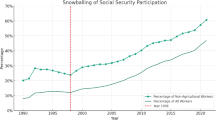Abstract
Since late 1980s China's urban land use began to change from administrative allocation to public land leasing. Based on the assumptions of fiscal decentralization and growth of private economy, this paper provides another perspective on public land leasing in addition to the well-known efficiency of market allocation of land resource. My focus is on the endogenous evolution of local public finance due to rent capitalization. Especially, I model a two-sector urban economy and a multi-task local government that allocates its effort to maximize fiscal revenue. The findings indicate that complete wage capitalization under administrative allocation of land contributes to the pressure on local governments to look for alternative revenue source. Public land leasing helps to include private firms into local public finance and re-orient local governments' interest from SOEs to public goods provision. A simple test on the institutional change shows the efficiency of public land leasing relative to the old system.
Similar content being viewed by others
Author information
Authors and Affiliations
Corresponding author
Additional information
I thank Rena Sivitanidou and Yongheng Deng for their helpful comments on an early version of the paper.




